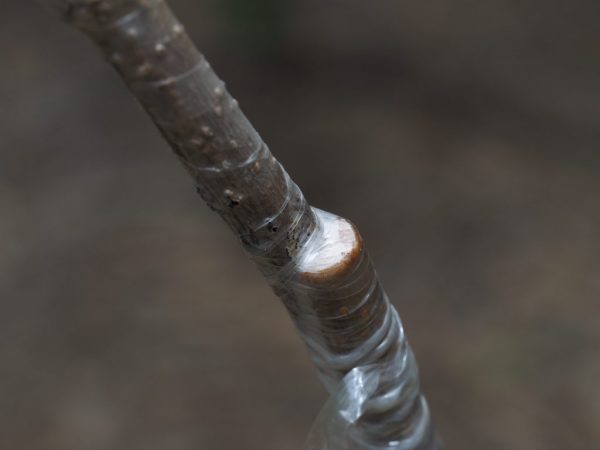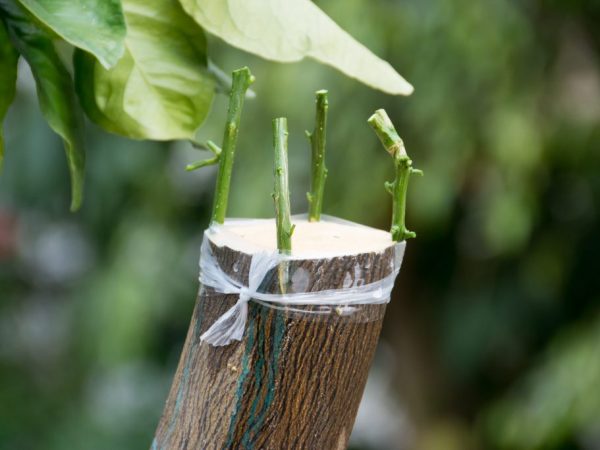Rules for vaccinating mandarin at home
Grafting tangerine at home makes it possible to propagate indoor citrus and get juicy fruits.

Rules for vaccinating mandarin at home
Why is citrus grafting necessary?
From a seed planted in a pot, a tangerine tree grows, which is called wild. It will have a beautiful aesthetic appearance, but you should not expect fruits from such a plant.
A tangerine grown from a bone at home is needed inoculation if necessary:
- accelerate the beginning of the fruiting stage in citrus,
- improve the quality characteristics of home crops,
- propagate indoor tangerine tree.
In order for the citrus grown from the seed to bear fruit, it is grafted onto a fruit-bearing tree, while it is permissible to take any variety, since the type of citrus does not significantly affect the result. At the same time, many gardeners strive to plant a tangerine at home of one varietal species in order to consolidate its quality characteristics.
Features of the vaccination process
The vaccination procedure requires:
- grown from a seed, grown and strengthened citrus, growing in a separate potted container, called a stock;
- a fruiting citrus tree with cuttings with 2-4 buds, called a scion.
Do not vaccinate citrus fruits under the age of 2 years.
2-3 days before the scheduled procedure, the tangerine tree is thoroughly watered and checked how free the bark is, for which a test incision is made just above the site of the future vaccination.
Prepare the necessary equipment and funds:
- sharp garden knife,
- insulating (grafting) tape,
- garden var,
- a plastic bag or a plastic bottle.
For home vaccination, the most appropriate time is considered April-May (for citrus grown indoors) and May-June (for grown in the country). At this time, active sap flow usually begins in the tangerine tree.
Gardeners who have sufficient experience in growing tangerines at home plant the plant all year round.
It is recommended to plant a tree growing in an open field in rainy weather. When carrying out the procedure in a closed room, a window is opened. All this provides the necessary level of moisture, preventing the scion from drying out.
Methods and technologies of conducting

The joint must be wrapped with tape
Inoculating a tangerine at home is permissible in one of the following ways:
- A kidney, for which they choose a healthy ripe, called an eye. Initially, the trunk of the rootstock tree is cleaned of dust and a "T" cut is made with a knife, without damaging the wood. The formed corners are folded back and the peephole is inserted into the resulting hole.
- Cutting, for which they choose a cutting that has 2-3 nodes with buds and cuttings from foliage. The stem of the stock is similarly cleaned of dust, and cut in the horizontal direction at a distance of 5-7 cm from the surface of the substrate.In the downward direction, a longitudinal cut is made, the bark is pushed aside and the prepared cutting is inserted there, wrapping the joint with a grafting tape and covering it with garden pitch.
Follow-up care
For the result of the mandarin vaccination to be effective, proper care must be provided after the procedure. If the following conditions are met, the graft will take root, and the grafted indoor citrus will begin to bear fruit.
Temperature
After the procedure, the plant grafted in the warm season is placed in cool conditions, where there is no direct sunlight. Summer temperature is kept at a level not higher than 25 ° С, in winter - about 10 ° С.
During the dormant period, from November, the air temperature is gradually lowered to 14 ° C.
Illumination
For light-loving citrus, they create sufficient illumination, therefore, it is more often located on the south side of the room, shading from the sun to avoid burning the foliage.
Watering
On hot days, it is required to regularly, up to 3 times a day, spray the foliage of the plant or wipe it with a damp cloth.
The culture is watered at regular intervals per day, on hot days - daily. Starting in November, watering homemade citrus is reduced to 2 times a week.
Top dressing
The grafted citrus is fed every 2 weeks. For prophylactic purposes against diseases and to strengthen the weakened plant, it is watered every 2 months with a solution of potassium permanganate or with iron vitriol.
Conclusion
Vaccination of tangerine at home is carried out in order to propagate citrus and encourage it to active flowering and fruiting. The procedure is carried out in one of the available ways. Proper care in the following days ensures the survival of the scion and the achievement of the desired result.


